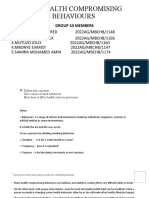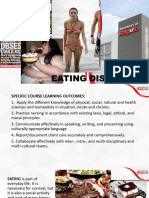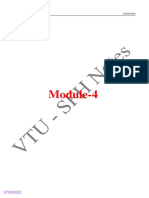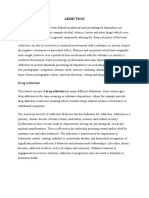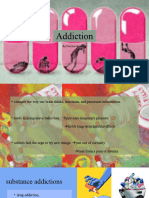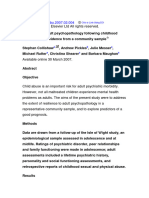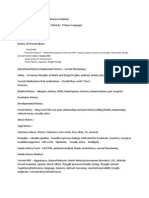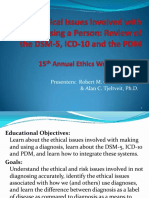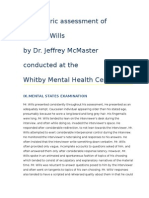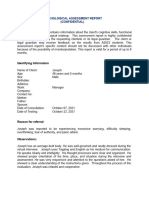0% found this document useful (0 votes)
7 views15 pagesHealth Compromizing Behavior
The document discusses health-compromising behaviors, particularly among adolescents, highlighting characteristics such as peer influence, pleasure-seeking, and common risk factors. It elaborates on substance use disorders as defined by DSM-5, detailing criteria like risky use, impaired control, social impairment, and pharmacological effects. Additionally, it covers smoking and eating disorders, including anorexia nervosa and bulimia nervosa, emphasizing their health risks and therapeutic approaches.
Uploaded by
aryaanchaudary2000Copyright
© © All Rights Reserved
We take content rights seriously. If you suspect this is your content, claim it here.
Available Formats
Download as PPTX, PDF, TXT or read online on Scribd
0% found this document useful (0 votes)
7 views15 pagesHealth Compromizing Behavior
The document discusses health-compromising behaviors, particularly among adolescents, highlighting characteristics such as peer influence, pleasure-seeking, and common risk factors. It elaborates on substance use disorders as defined by DSM-5, detailing criteria like risky use, impaired control, social impairment, and pharmacological effects. Additionally, it covers smoking and eating disorders, including anorexia nervosa and bulimia nervosa, emphasizing their health risks and therapeutic approaches.
Uploaded by
aryaanchaudary2000Copyright
© © All Rights Reserved
We take content rights seriously. If you suspect this is your content, claim it here.
Available Formats
Download as PPTX, PDF, TXT or read online on Scribd
/ 15






